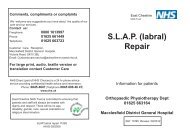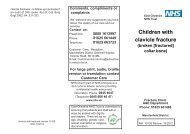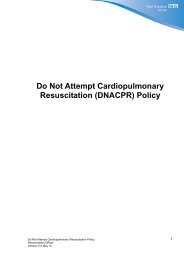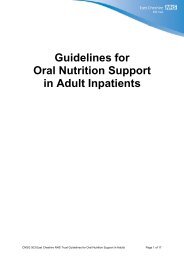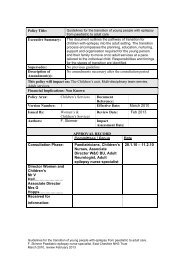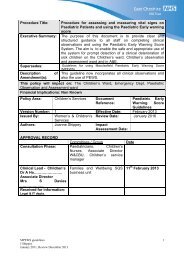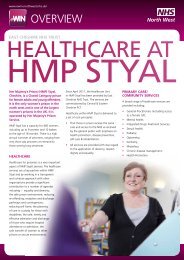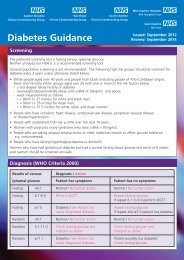Post death procedure - East Cheshire NHS Trust
Post death procedure - East Cheshire NHS Trust
Post death procedure - East Cheshire NHS Trust
You also want an ePaper? Increase the reach of your titles
YUMPU automatically turns print PDFs into web optimized ePapers that Google loves.
SECTION EIGHT - INFECTION PREVENTION & CONTROLHospital Guidelines on the precautions to be taken with the bodies of thosewho have died with a known or suspected infection1. INTRODUCTIONOpinion differs among health care workers on the management of a body associated withan infection and the measures taken or advised to control the perceived hazards areoften insensitively applied. The indiscriminate use of body bags may cause needlessanxiety for the bereaved family, friends and also among the hospital staff.Grieving is essential for the healing process and in some religions and cultures it mayrequire special rituals including washing the body and kissing. Not allowing the last rites tobe performed before placing the body in a plastic bag or sheet may cause deepresentment. Partners or relatives should be asked about their wishes before bodypreparation is commenced.The safety of all persons who may come in contact with a body associated with an infectionmust always be given high priority and this is covered in various Acts of Parliament and byRegulations made under these Acts. There should be a balance between what is requiredfor safety and the sensitivity and dignity of the bereaved.Not all cases of infection will have been identified before <strong>death</strong> and for this reason it isstrongly recommended that high standards are adopted for the handling of all bodies.2. SPREAD OF INFECTIONOrganisms in a dead body are unlikely to infect healthy people with intact skin, but there areother ways they may be spread.a. Needlestick injuries with a contaminated instrument or sharp fragment of bone.b. Contaminated aerosols or splashes from body openings or wounds.c. Aerosol from lungs, eg. tubercle bacilli when condensation could possibly be forcedout through the mouth.d. Intestinal pathogens from anal and oral orifices.e. Through and from abrasions, wounds and sores on the skin.f. Splashes or aerosols onto the conjunctivae.The risks of infection are not high (and no more than in life) and are usually prevented bythe use of appropriate protective clothing and the observance of COSHH (2002)regulations.If a risk of infection is known or suspected, certain <strong>procedure</strong>s need to be followed (seeAppendix I and II).3. COMMUNICATION24/34





